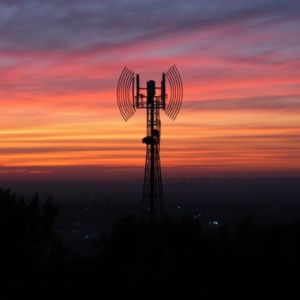Signal amplification is a technique used in wireless communication to increase the strength of a signal, making it easier for the receiver to detect and understand the information being sent. In simple terms, it’s like turning up the volume of a sound so it’s loud enough to be heard clearly.

Why Signal Amplification is Important:
In wireless communication, signals often travel long distances or pass through obstacles like walls, trees, or buildings. As the signal travels, it can become weaker and harder to detect, which can lead to poor quality or lost data. Signal amplification helps overcome this problem by boosting the strength of the signal, ensuring clear communication over long distances or in challenging environments.
How Signal Amplification Works:
Signal amplification works by increasing the power of the signal. The process involves a special device or circuit, called an amplifier, which takes a weak signal and boosts it to a stronger level so that it can travel farther or maintain quality.
Types of Signal Amplification Techniques:
1. Power Amplification:
- What It Is: Power amplifiers increase the power (or strength) of the transmitted signal before it is sent out by the transmitter. This is crucial for long-range communication because it ensures the signal can travel long distances without losing too much strength.
- How It Works: The amplifier increases the voltage or current of the signal, making it stronger without changing the information it carries.
- Usage: Power amplifiers are commonly used in mobile phones, radio stations, and satellite communication systems to ensure the transmitted signals can reach the receiver clearly.
2. Low-Noise Amplification:
- What It Is: Low-noise amplifiers (LNAs) are used to amplify weak signals received by an antenna without adding too much extra noise.
- How It Works: While amplifying the signal, LNAs are designed to add minimal noise, which means they preserve the quality of the signal as much as possible. This is particularly important for receiving weak signals from distant sources, like in satellite communication.
- Usage: LNAs are typically used in the receiving end of wireless communication systems, such as in mobile phones or radio receivers.
3. Distributed Amplification:
- What It Is: Distributed amplification involves amplifying the signal at various points along the transmission path, rather than amplifying it all at once at the source.
- How It Works: In this method, amplifiers are placed at regular intervals along the communication path (e.g., in fiber-optic cables or wireless links), reducing signal loss and ensuring that the signal remains strong throughout its journey.
- Usage: This technique is commonly used in fiber-optic communication and long-distance wireless communication.
4. Adaptive Amplification:
- What It Is: Adaptive amplification is a technique where the amplifier adjusts its gain (strength) based on the strength of the incoming signal. This helps improve efficiency by ensuring the signal is neither too weak nor too strong.
- How It Works: If the signal is weak, the amplifier increases its gain; if the signal is strong, the amplifier reduces its gain to avoid over-amplification (which could distort the signal).
- Usage: Adaptive amplification is often used in modern wireless systems like 4G/5G networks, where the signal strength varies based on distance, obstacles, and interference.
5. Regenerative Amplification:
- What It Is: Regenerative amplification is a more advanced method where the weak signal is completely regenerated (or recreated) before being amplified. This helps in restoring the signal to its original quality.
- How It Works: The signal is first cleaned up and regenerated, meaning any distortion or noise is removed, and then it is amplified to the desired level. This ensures a clean, strong signal.
- Usage: This technique is commonly used in satellite communications, where signals need to travel long distances, and quality must be preserved.
Key Devices Used for Signal Amplification:
1. Amplifiers:
- These are electronic devices that increase the power of the signal. Amplifiers can be used in both transmission and reception parts of a communication system.
2. Repeaters:
- Repeaters are devices that take a weak signal, amplify it, and send it out again, usually at a longer distance. They are especially useful in long-distance communication and in wireless networks to extend coverage.
- How They Work: A repeater receives a weak signal, amplifies it, and then retransmits it to cover a greater distance.
3. Antenna Boosters:
- Antenna boosters are used to enhance the signal received by antennas. They amplify the received signal before it is processed, making it stronger for the receiver.
Types of Amplification in Wireless Networks:
- RF (Radio Frequency) Amplification:
- RF amplifiers are used to boost radio signals, making them stronger before transmission or after reception. These amplifiers are essential in wireless communication systems like mobile networks, TV transmission, and Wi-Fi.
- Optical Amplification:
- In optical communication systems, like fiber optics, optical amplifiers amplify light signals directly, rather than converting them into electrical signals first. This is much more efficient for long-distance communication, as light can travel much faster and with less loss over long distances.
- Power Amplifiers in Cellular Networks:
- In cellular networks (like 4G or 5G), power amplifiers are used in base stations to boost signals to reach mobile devices over wide areas. They help ensure coverage in cities, rural areas, or large buildings.
Advantages of Signal Amplification:
- Increased Range: Amplified signals can travel longer distances, allowing for communication over greater areas.
- Better Quality: Signal amplification helps to preserve the quality of the transmitted data by reducing the effects of signal degradation, ensuring clearer communication.
- Improved Reliability: By amplifying the signal, it becomes more reliable, reducing the chances of data loss or interference.
Challenges:
- Noise and Distortion: Amplifiers can add some noise to the signal, which can degrade the quality. Techniques like low-noise amplification help minimize this issue.
- Power Consumption: Amplifiers, especially high-power ones, consume a lot of energy. This is a challenge in mobile devices and remote communication systems.
Conclusion:
Signal amplification is a crucial technique in wireless communication that boosts the strength of signals, ensuring clear and reliable communication over long distances or in environments with obstacles. By using amplifiers, repeaters, and advanced techniques like adaptive or regenerative amplification, wireless systems can provide better coverage, higher data rates, and improved quality for users.











